-
 Bitcoin
Bitcoin $83,002.8173
-1.53% -
 Ethereum
Ethereum $1,789.8108
-1.26% -
 Tether USDt
Tether USDt $0.9996
0.01% -
 XRP
XRP $2.1274
-0.12% -
 BNB
BNB $592.2431
-0.97% -
 Solana
Solana $119.1598
-2.76% -
 USDC
USDC $1.0000
0.01% -
 Dogecoin
Dogecoin $0.1681
-0.92% -
 Cardano
Cardano $0.6492
-1.84% -
 TRON
TRON $0.2378
-0.90% -
 UNUS SED LEO
UNUS SED LEO $9.0490
-4.47% -
 Chainlink
Chainlink $12.6724
-2.46% -
 Toncoin
Toncoin $3.2495
-4.20% -
 Stellar
Stellar $0.2500
-3.61% -
 Avalanche
Avalanche $17.9358
-1.14% -
 Shiba Inu
Shiba Inu $0.0...01225
-0.09% -
 Sui
Sui $2.2095
-2.78% -
 Hedera
Hedera $0.1613
-2.64% -
 Litecoin
Litecoin $82.2053
-2.61% -
 Polkadot
Polkadot $3.9330
-2.77% -
 MANTRA
MANTRA $6.2724
-0.02% -
 Bitcoin Cash
Bitcoin Cash $298.9098
-0.31% -
 Dai
Dai $1.0001
0.01% -
 Bitget Token
Bitget Token $4.4381
-2.33% -
 Ethena USDe
Ethena USDe $0.9991
-0.01% -
 Pi
Pi $0.5881
11.02% -
 Hyperliquid
Hyperliquid $11.8159
-0.99% -
 Monero
Monero $213.1994
-1.09% -
 Uniswap
Uniswap $5.8098
-1.72% -
 OKB
OKB $51.6086
5.77%
What is a decentralized identity management system in Web3?
"Decentralized identity management empowers individuals in Web3 with self-sovereignty, enhanced security, improved privacy, and frictionless transactions."
Feb 17, 2025 at 11:24 pm
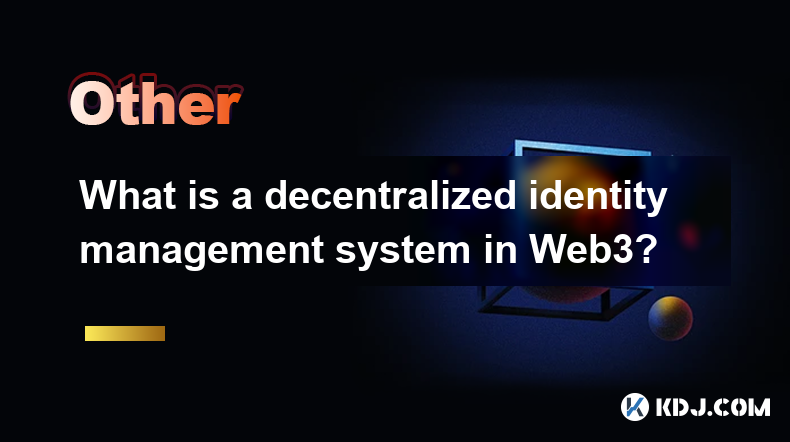
Key Points
- Definition and Overview of Decentralized Identity Management in Web3
- Benefits of Decentralized Identity Management in Web3
- Challenges and Limitations of Decentralized Identity Management in Web3
- Current State of Development and Adoption of Decentralized Identity Management in Web3
- Future Prospects and Trends for Decentralized Identity Management in Web3
What is a Decentralized Identity Management System in Web3?
In the realm of Web3, decentralized identity management systems empower individuals with the tools to create and control their own digital identities. These systems are characterized by the following:
- Self-Sovereign Ownership: Users retain exclusive ownership and control over their identity data, eliminating reliance on centralized entities and reducing the risk of data breaches.
- Privacy and Data Control: Individuals have granular control over how their personal information is shared and used, enhancing privacy and mitigating the risk of identity theft.
- Interoperability: Identities can seamlessly interact across various applications and platforms, promoting data portability and eliminating the need for multiple separate identities.
- Transparency: The verification and validation processes are transparent and auditable, establishing trust and reducing the potential for fraud.
Benefits of Decentralized Identity Management in Web3
The adoption of decentralized identity management in Web3 offers a multitude of benefits:
- Enhanced Security: Eliminating single points of failure and relying on decentralized storage mechanisms significantly reduces the likelihood of data breaches and unauthorized access.
- Improved Privacy: Users can selectively disclose only the necessary information, minimizing the risk of their personal data being compromised or misused.
- Frictionless Transactions: Decentralized identities enable faster and more efficient onboarding processes, reducing the need for lengthy verification procedures.
- Empowerment of Individuals: Individuals assume complete ownership and control over their digital identities, promoting self-governance and autonomy.
- Data Monetization: Users can choose to monetize their identity data, allowing them to reap the benefits of their digital presence.
Challenges and Limitations of Decentralized Identity Management in Web3
While decentralized identity management offers numerous advantages, it also faces certain challenges and limitations:
- Interoperability and Standards: Ensuring seamless interoperability across different systems remains a work in progress, and the lack of standardized protocols can hinder widespread adoption.
- Scalability Concerns: Handling large volumes of user identities and transactions on a decentralized network can pose scalability challenges, potentially affecting performance and efficiency.
- Cost and Complexity: Implementing decentralized identity systems can be complex and resource-intensive, potentially limiting their accessibility for some users.
- Legal and Regulatory Uncertainties: Navigating the evolving legal and regulatory landscape around decentralized identities is crucial for ensuring compliance and avoiding potential legal hurdles.
- User Education and Adoption: Raising awareness and promoting adoption among users requires significant effort, as transitioning to a decentralized identity paradigm represents a significant shift from traditional centralized models.
Current State of Development and Adoption of Decentralized Identity Management in Web3
The development and adoption of decentralized identity management systems in Web3 are evolving rapidly, with numerous projects and initiatives emerging:
- Self-Sovereign Identity (SSI): The SSI movement focuses on empowering individuals with self-owned and controlled digital identities. Notable projects include Sovrin, Hyperledger Indy, and Verifiable Credentials (VCs).
- Decentralized Identifiers (DIDs): DIDs provide a unique identifier for individuals in the decentralized ecosystem. The W3C DID Working Group is actively developing standards for DIDs.
- Blockchain-Based Solutions: Several blockchain projects, such as Ethereum and Polygon, offer features to support decentralized identity management, including DID storage and credential issuance.
- Commercial Implementations: Companies like Civic, IDEXO, and MyPass are developing commercial solutions for decentralized identity management in Web3 applications.
- Non-Profit Initiatives: Non-profit organizations like the Decentralized Identity Foundation (DIF) and the Internet Identity Workshop (IIW) are actively promoting the adoption and standardization of decentralized identity solutions.
Future Prospects and Trends for Decentralized Identity Management in Web3
The future of decentralized identity management in Web3 holds promising prospects and trends:
- Increased Adoption and Mainstream Use: Growing awareness and the development of user-friendly solutions will drive increased adoption by individuals and enterprises.
- Standardization and Interoperability: Collaboration between industry leaders and organizations will accelerate the development of interoperable standards, facilitating seamless identity management across platforms.
- Integration with Existing Systems: Decentralized identity solutions will be increasingly integrated with existing centralized systems, providing a hybrid approach that leverages the benefits of both models.
- New Use Cases and Applications: As decentralized identity becomes more established, new use cases and applications will emerge, such as decentralized social networks, digital payments, and healthcare systems.
- Government and Regulatory Involvement: Governments and regulatory bodies are expected to play a role in shaping the future of decentralized identity management, ensuring compliance and responsible adoption.
FAQs
What is the difference between centralized and decentralized identity management?
Centralized identity management systems rely on a single authority to manage user identities, while decentralized systems distribute control among multiple entities or individuals, eliminating the risk of a single point of failure.
How can decentralized identity management improve online security?
By eliminating single points of failure and providing users with granular control over their data, decentralized identity management systems significantly reduce the risk of data breaches and unauthorized access.
What challenges need to be overcome for widespread adoption of decentralized identity management?
Ensuring interoperability, addressing scalability concerns, providing user education, and navigating legal and regulatory uncertainties are key challenges that need to be overcome for decentralized identity management to gain widespread adoption.
What are the potential applications of decentralized identity management in Web3?
Decentralized identity management has a wide range of potential applications in Web3, including self-sovereign digital identities, decentralized social networks, digital payments, and healthcare systems.
Disclaimer:info@kdj.com
The information provided is not trading advice. kdj.com does not assume any responsibility for any investments made based on the information provided in this article. Cryptocurrencies are highly volatile and it is highly recommended that you invest with caution after thorough research!
If you believe that the content used on this website infringes your copyright, please contact us immediately (info@kdj.com) and we will delete it promptly.
- Altcoin Season Has Not Yet Arrived, but Market Participants Are Watching Closely as Bitcoin Falters
- 2025-04-06 03:40:12
- Ethereum (ETH) Rivals Are Attracting Increasing Attention from Investors
- 2025-04-06 03:40:12
- Ozak AI (OZ) Tokenizes Artificial Intelligence, Aiming to Surge 1000x From Its Presale Price
- 2025-04-06 03:35:12
- Binance Unveils Groundbreaking Integration That Shatters Silos Between CEXs and DEXs
- 2025-04-06 03:35:12
- Shiba Inu (SHIB/USD) is Up 5% on Tuesday
- 2025-04-06 03:30:13
- Bybit Web3 Announces Streamlining of Offerings to Enhance User Experience
- 2025-04-06 03:30:13
Related knowledge
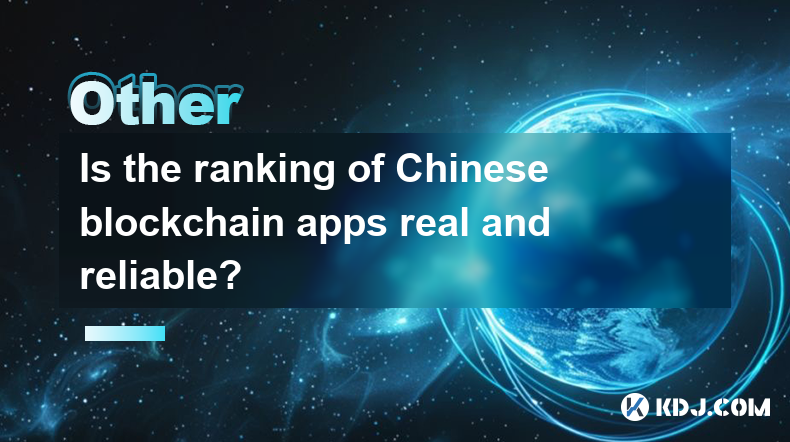
Is the ranking of Chinese blockchain apps real and reliable?
Apr 04,2025 at 09:01pm
The ranking of Chinese blockchain apps has become a topic of interest for many in the cryptocurrency community, as it provides insights into the popularity and adoption of blockchain technology within China. However, the reliability and authenticity of these rankings are often questioned. This article aims to delve into the factors that influence these ...
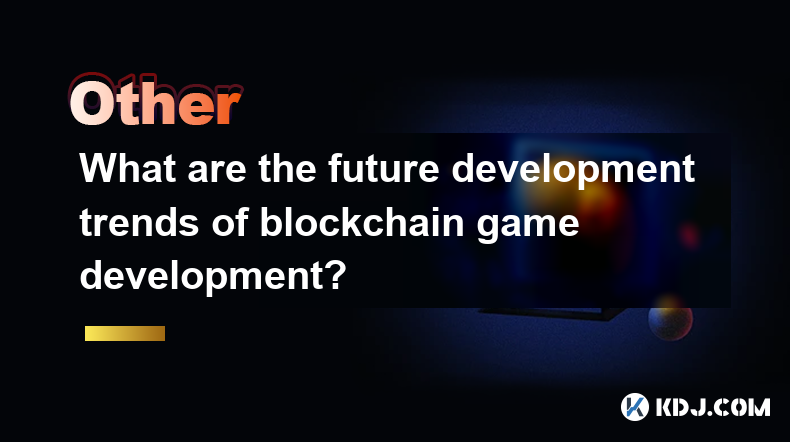
What are the future development trends of blockchain game development?
Apr 03,2025 at 05:00am
Blockchain technology has revolutionized various industries, and gaming is no exception. As we look to the future, several trends are set to shape the development of blockchain games. These trends not only promise to enhance the gaming experience but also to integrate blockchain technology more seamlessly into the gaming ecosystem. Let's explore these t...
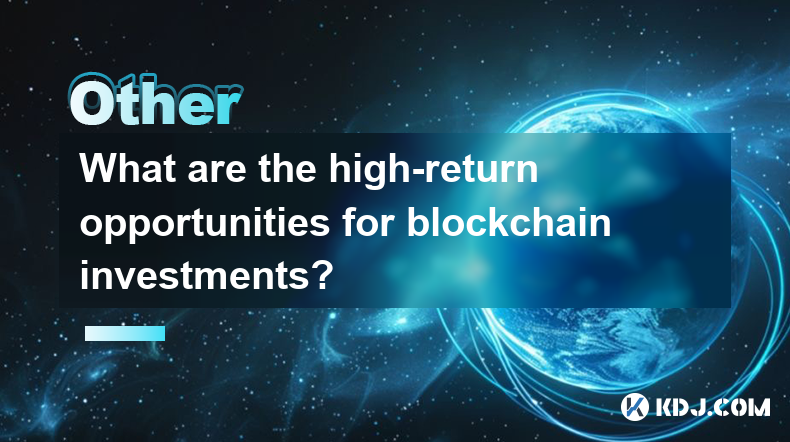
What are the high-return opportunities for blockchain investments?
Apr 05,2025 at 02:35pm
Blockchain technology has revolutionized the financial world, offering numerous high-return investment opportunities. These opportunities span various sectors within the cryptocurrency ecosystem, including cryptocurrencies, decentralized finance (DeFi), non-fungible tokens (NFTs), and blockchain startups. Each of these areas presents unique risks and re...
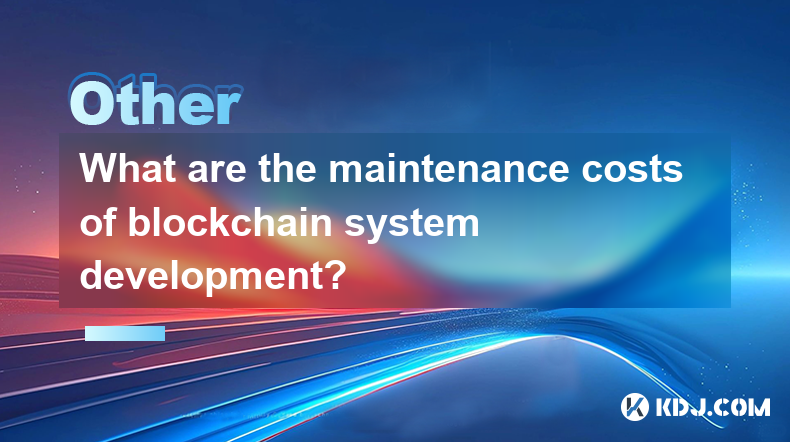
What are the maintenance costs of blockchain system development?
Apr 03,2025 at 06:07pm
The maintenance costs of blockchain system development are multifaceted and depend on various factors. These costs can include technical maintenance, security updates, infrastructure expenses, and personnel costs. Understanding these elements is crucial for anyone planning to develop or maintain a blockchain system. Technical MaintenanceTechnical mainte...
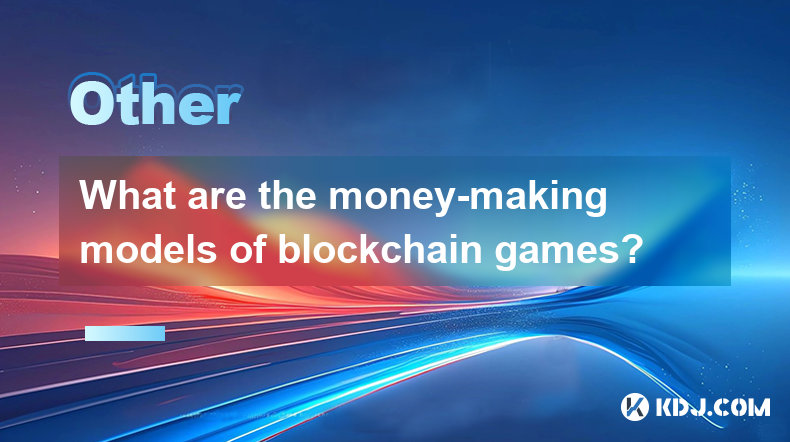
What are the money-making models of blockchain games?
Apr 04,2025 at 02:00pm
Blockchain games have emerged as a revolutionary way for players to earn real money while enjoying their favorite pastime. These games leverage the power of blockchain technology to create unique money-making models that benefit both the players and the developers. In this article, we will explore the various money-making models of blockchain games and ...
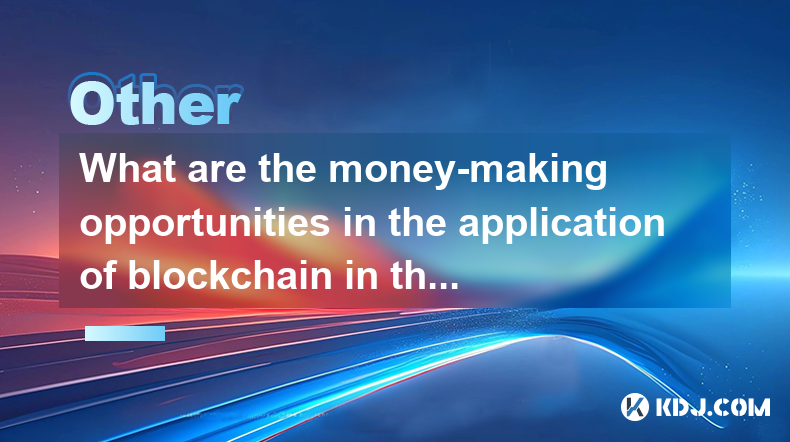
What are the money-making opportunities in the application of blockchain in the field of Internet of Things?
Apr 05,2025 at 10:35pm
The integration of blockchain technology with the Internet of Things (IoT) presents numerous money-making opportunities. Blockchain, with its decentralized and secure nature, can revolutionize how IoT devices interact, manage data, and conduct transactions. This article will explore various avenues where entrepreneurs, developers, and investors can capi...

Is the ranking of Chinese blockchain apps real and reliable?
Apr 04,2025 at 09:01pm
The ranking of Chinese blockchain apps has become a topic of interest for many in the cryptocurrency community, as it provides insights into the popularity and adoption of blockchain technology within China. However, the reliability and authenticity of these rankings are often questioned. This article aims to delve into the factors that influence these ...

What are the future development trends of blockchain game development?
Apr 03,2025 at 05:00am
Blockchain technology has revolutionized various industries, and gaming is no exception. As we look to the future, several trends are set to shape the development of blockchain games. These trends not only promise to enhance the gaming experience but also to integrate blockchain technology more seamlessly into the gaming ecosystem. Let's explore these t...

What are the high-return opportunities for blockchain investments?
Apr 05,2025 at 02:35pm
Blockchain technology has revolutionized the financial world, offering numerous high-return investment opportunities. These opportunities span various sectors within the cryptocurrency ecosystem, including cryptocurrencies, decentralized finance (DeFi), non-fungible tokens (NFTs), and blockchain startups. Each of these areas presents unique risks and re...

What are the maintenance costs of blockchain system development?
Apr 03,2025 at 06:07pm
The maintenance costs of blockchain system development are multifaceted and depend on various factors. These costs can include technical maintenance, security updates, infrastructure expenses, and personnel costs. Understanding these elements is crucial for anyone planning to develop or maintain a blockchain system. Technical MaintenanceTechnical mainte...

What are the money-making models of blockchain games?
Apr 04,2025 at 02:00pm
Blockchain games have emerged as a revolutionary way for players to earn real money while enjoying their favorite pastime. These games leverage the power of blockchain technology to create unique money-making models that benefit both the players and the developers. In this article, we will explore the various money-making models of blockchain games and ...

What are the money-making opportunities in the application of blockchain in the field of Internet of Things?
Apr 05,2025 at 10:35pm
The integration of blockchain technology with the Internet of Things (IoT) presents numerous money-making opportunities. Blockchain, with its decentralized and secure nature, can revolutionize how IoT devices interact, manage data, and conduct transactions. This article will explore various avenues where entrepreneurs, developers, and investors can capi...
See all articles





















































































